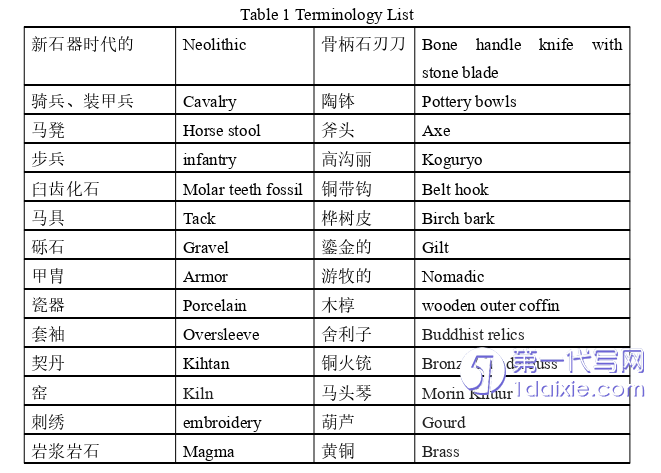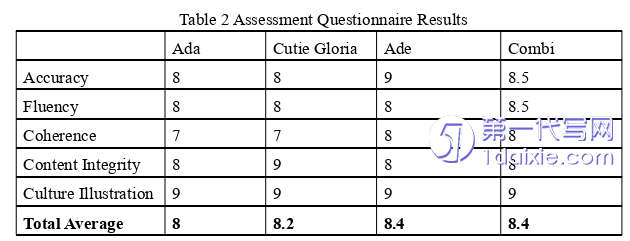本文是一篇英语论文,笔者通过后来的反思以及客户的反馈,我们发现了三个突出的问题:误解、沟通过程中的信息丢失和对文化意图的解释不足。为了解决口译中出现的这些问题,从生态翻译学的理论出发,提出了有效的口译策略。
Chapter 1 Task Description
1.1 Task Background
The task is based on an interpreting practice in Jilin Provincial Museum and theauthor interprets for four Nigerian students from Jilin University to visit the museum.The task took place on June 12th 2021,which happens to be traditional ChineseDragon Festival.The four Nigerian students were in their last year of their bachelorstudy in Jilin University and would leave Changchun at the end of June,so they hopedto learn more about the culture and history of Jilin province.In this case,JilinProvincial Museum was the best place to visit since it was the largest museum in Jilinprovince and owns the wildest range of culture relics.
The author got the task one week ahead so the preparation time was quite limited.Firstly,the author needed to deal with some issues related to the Covid-19 preventionand control requirements to ensure the visit to be successful.According to theepidemic prevention and control requirements of Jilin Provincial Museum,the authortalked with four Nigerian students and made sure they have not been to high-riskareas in recent days and their“Jixiang”code were all green.Since Jilin ProvincialMuseum is free for entrance,the author made sure that foreign visitors need to bringtheir passport and didn’t need to make appointment before the visit.Then,the authorfound a tour guide of Jilin Provincial Museum and arranged the visiting time.Thetour guide was honored as the“gold-medal”level of Jilin Provincial Museum whoowns abundant knowledge and experiences.
1.2 Significance of the Task
For the last decades,tourism has played an important role to local economicgrowth.With the development of tourism,China welcomed travelers from all over theworld.Due to the Covid-19,international tourism had been interrupted.However,there were foreign students living and studying in China who were interested invisiting museums or sights nearby and have a better understanding of Chinese historyand culture.Museums comprehensively display splendid achievements of Chinesecivilization and most public museums were free to the public.Best of all,JilinProvincial Museum,known as the largest museum in Jilin province,provides guidingservices for visitors all year round.For foreign visitors,guide-interpreters have beentaking a significant role in helping them understand the information conveyed by thetour guide.
As to the interpreter herself,the task gave her a precious opportunity to practiceher learning knowledge of interpreting.Through the task,the interpreter obtainedsome experience for her future study and work in this field.Firstly,the interpreterenriched her knowledge about the history and culture of Jilin province.The interpreterhad a better understanding about the interpreter’s role in the task.Compared to othertypes of interpreting activities,guide-interpreting was more flexible and required arelatively lively environment.It was the interpreter’s responsibility to create andmaintain such a lively environment by her specialized knowledge and communicatingskills.She was aware that guide-interpreting is not a word-to-word process butinvolves multi-dimensional ways to deal with difficult cultural-loaded words andcultural shock during the task.
Chapter 2 Interpreting Process
2.1 Pre-task Preparations
In order to complete the interpreting task well and give an overall display of JilinProvincial Museum,the preparation before the task was needed.The preparation partmainly includes background information collection,terminology establishment andpreparation for other related issues.
2.1.1 Background Information Collection
Because of time limit,the interpreter must collect the most useful informationrelated to the task quickly.At first,the interpreter looked through the official websiteof Jilin Provincial Museum to grasp a general idea of the museum.She noticed thatthe most valuable collection in Jilin Provincial Museum to visit was-<The memoryof Baishan Songshui-Jilin Province History and Culture Exhibition>on the secondfloor of the museum.The exhibition is divided into four parts:the dawn of civilization,the ancient rhyme of the Han and Tang Dynasties,the majesty of pine and desert andthe brilliant achievements of the Ming and Qing Dynasties.The collection vividlyshows the vicissitudes of history and changes of Jilin Province since the beginning ofhuman activities,and reflects the continuous development of the people of all ethnicgroups in the frontier.As the official website only provided very simple introductionto the museum and its collections,the interpreter visited the museum by herselfadvanced to the interpreting task.As the museum offered two normal and free guidetours every day at 10am and 2pm respectively,the interpreter joined one guide at 2pmtwo days before the task.As different tour guides had different guiding styles and key discourse points,the interpreter tried her best to get the important points duringthe pre-task visit and made a list of the terminology.

2.2 On-site Interpreting
The task lasted about 90 minutes.The second floor was,as it mentioned above,the Jilin Province History and Culture Exhibition which occupied more than 2/3 time of the whole task.The fourth floor was the exhibition of intangible culture heritage ofJilin province,showing the traditional art and customs of Jilin people along the history.To help with the assessment of the task,the interpreter prepared two recorders,one inthe pocket of the guide and the other with the interpreter.One Nigerian student alsotook photos and videos,leaving a fantastic memory of the visit.Owing to the pre-taskpreparations,the interpreter achieved a success of the task.However,there remainedsome mistakes and problems due to background information limitation and thetension of the interpreter as it was her first time doing such a task.The interpreterbore in mind of creating a relaxing and active atmosphere and kept eye contact withthe guide and clients.Later,the interpreter communicated with the clients aboutgiving feedback about her job.She transcribed the recordings in order to find outproblems and improve her interpreting ability for the future.
Chapter 3 Theoretical Foundation:Eco-Translatology Theory.............................8
3.1 Eco-Translatology and Guide Interpreting....................................8
3.2“Three-Dimensional Transformation”Methods..................................10
Chapter 4 Problems and Solutions........................................12
4.1 Misinterpretation and Solutions from Linguistic Dimension........................................12
4.1.1 Improper Use of Descriptive Words....................................12
4.1.2 Misinterpretation of Terminology...........................................14
Conclusion....................................28
Chapter 4 Problems and Solutions
4.1 Misinterpretation and Solutions from Linguistic Dimension
After transcribing the recording,the interpreter summarized her problems oflinguistic dimension into two kinds:improper use of descriptive words andmisinterpretation of terminology.Some examples are selected from the transcripts andaccordingly proposed corresponding solutions.
4.1.1 Improper Use of Descriptive Words
Besides some cultural-loaded words,during the task there were many descriptivewords used by the guide to give detailed introduction.While as the interpreter paidmore attention to the relic and history related terms,she sometimes ignored theinterpreting of descriptive words during the task.Meanwhile,due to the limitation ofknowledge and preparation time,the interpreter made some mistakes in the task.Examples are as follows.
Example 1
Guide:1990年在前郭尔罗斯蒙古族自治县的哈拉毛都乡的这个王府屯的遗址当中发现了一批打制石器,经科学家鉴定,认为是100万年前人类的遗留物,然后我们看到展柜里就是当时的打制石器。(00:52-01:09)
Interpreter:And in 1990,here we found some polished stone tools that showed thatthey have worked here,work and live here.It was regarded as the remains of humans1 million years ago.And we can see the polished stone tools at that time.(01:23-01:35)

Conclusion
The task analyzed in this report was a Chinese-English guide interpreting tour inJilin Provincial Museum for four Nigerian students in Jilin University.Due toinexperience,the interpreter encountered some problems while cooperating the tourguide and the Nigerian students.Through later reflection together with the feedbackfrom the clients,three prominent problems were identified:misinterpretation,information loss in communication process and inadequate interpretation of culturalintentions.To solve these problems happened in the interpretation,“multi-dimensiontransformation”from the theory of Eco-Translatology was adopted to proposeeffective interpreting strategies.In terms of improper use of descriptive words andterminology misinterpretation,strategy of adjusting the distribution of attention andenriching encyclopedia knowledge were suggested from linguistic dimension.As theprocess of communication is largely affected by the delivery of information,colloquial speech and scattered expression of the guide resulted in some informationloss inevitably during the interpretation.As for this problem amplification andreconstruction strategy from communicative dimension are proposed to improve thecommunication among the guide,the interpreter and the clients.Cultural intention isan important and indispensable part in guide interpreting,especially in museums.Theinterpreter should adapt to the cultural ecological environment of interpretation andcultural interpretation and transliteration combined with free translation strategy willbe suggested so that the target audience will have a better understanding of somehistory and culture specific items and phenomenon in local places.
reference(omitted)
